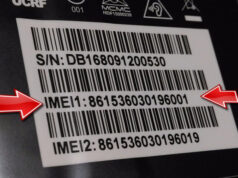Let’s face it—tech upgrades don’t come cheap. Whether it’s outfitting your fleet with AI cameras or rolling out analytics software, the price tags can feel intimidating. But here’s the truth most seasoned operators know: the right tech doesn’t just pay for itself—it starts saving you money faster than you’d think.
According to the experts at Idrive though, the long-term savings they produce make these systems smart investments. They spend a little more upfront and end up saving thousands on accidents, wasted fuel, staff time, and bad calls.
This article dives into real-world examples of how tools like AI dash cams, video telematics, predictive analytics, and automation systems are helping businesses cut costs and gain control. It’s not about chasing the latest gadgets. It’s about smart investments that make your operations leaner, safer, and more efficient over time.
🔑 Key Highlights:
- 🚚 AI-powered dash cams improve safety and shield companies from liability claims.
- 🎥 Video telematics combine visual and data insights for total fleet oversight.
- 📊 Predictive analytics turn historical data into actionable forecasts.
- 🤖 RPA systems automate repetitive tasks to boost productivity.
- 💰 ROI becomes visible in cost savings, reduced errors, and faster decisions.
- 📈 Smart tech strategies provide lasting competitive advantages.
Enhancing Oversight with AI Dash Cams

AI dash cams are more than just digital eyes on the road. These intelligent systems:
- Record driver views and behaviors inside and outside the cab.
- Analyze performance in real-time using AI to detect risks.
- Automatically flag unsafe events like sudden braking or drowsy driving.
- Provide training suggestions to coach better driver habits.
Why it matters:
- Video evidence protects companies from false claims.
- Analytics reduce accident rates and improve driver performance.
- Insurance premiums often decrease due to enhanced safety measures.
📈 ROI Snapshot:
| Benefit | Impact |
| Reduced accidents | ↓ Legal & repair costs |
| Improved coaching | ↑ Driver efficiency |
| Insurance discounts | ↓ Operational expenses |
Companies that adopt AI dash cams report faster claim resolutions, better training outcomes, and significant savings—often within the first year.
Centralizing Data with Video Telematics

Traditional telematics gave us fuel stats and location tracking. Video telematics go several steps further by combining this data with real-time video footage.
Core Benefits:
- Monitor vehicle performance and driver behavior visually.
- Analyze braking, acceleration, idling, and route efficiency.
- Access footage for training, compliance, or legal purposes.
🧠 Smart Integration Means:
- More context for every data point.
- Faster investigations when issues arise.
- Stronger compliance across logistics and safety.
💼 Use Case Example: A logistics company noticed repeated hard braking on a specific route. By reviewing the video, they discovered poorly timed traffic lights were the cause—not driver error. This allowed better routing, not unnecessary retraining.
Though initial investment includes hardware and cloud-based platforms, most companies break even within 18–24 months through better routing, compliance, and downtime reduction.
Crunching Numbers with Predictive Analytics

Predictive analytics make business planning smarter by forecasting outcomes instead of reacting to them.
Key Applications:
- Fleet managers use it to predict maintenance needs.
- Warehouse teams forecast supply spikes to manage staffing.
- Retailers predict seasonal product demand for stock control.
📌 Advantages at a Glance:
- Fewer last-minute decisions.
- Reduced downtime and overstocks.
- Data-driven strategies replace guesswork.
📊 Before vs. After:
| Without Analytics | With Predictive Analytics |
| Reactive maintenance | Preventative maintenance |
| Inventory shortages | Inventory planning ahead |
| Guess-based staffing | Demand-aligned staffing |
The setup takes time—especially data preparation—but once live, these tools unlock major operational gains.
Automating for Cost Control

Routine tasks bog down human workers and open the door for errors. Robotic Process Automation (RPA) solves this by simulating human workflows using bots.
Top RPA Functions in Operations:
- 🧾 Invoice processing
- 📨 Email sorting and auto-replies
- 📊 Report generation
- 🖥️ CRM updates
🎯 Why It Works:
- RPA bots work 24/7 with zero fatigue.
- Speed and accuracy dramatically increase.
- Staff can focus on creative and strategic work.
Cost Savings Example: An HR team used bots to automate payroll calculations and onboarding emails. The result? A 60% time saving per month, fewer errors, and higher employee satisfaction.
While onboarding bots takes planning, the long-term freedom from repetitive tasks pays for itself through improved output and lower labor overhead.
Integrating Systems for Better Results
Modern tools work best when they talk to each other. Integration is key.
Imagine this setup:
- Dash cams stream video to your telematics dashboard.
- Predictive analytics analyze that footage and performance data.
- RPA bots prepare weekly reports or alert staff based on anomalies.
🧩 Unified systems mean:
- No duplicate data entry.
- Real-time collaboration between teams.
- Holistic oversight from one dashboard.
Integration amplifies the value of every tool by turning isolated systems into synchronized intelligence.
Training Teams for a Tech-Ready Workforce

No tech is effective without people who know how to use it. Training must be built into the investment.
📘 What Good Training Looks Like:
- Hands-on workshops
- Digital manuals and tutorials
- Access to on-demand support
Bonus Benefit: Training reduces resistance. When workers understand how tech helps them, adoption soars.
🔄 Companies that combine tech investment with staff enablement always outperform those that treat tools as a one-time fix.
Measuring ROI the Right Way
The initial cost of smart tech can look intimidating—but when evaluated correctly, the value becomes obvious.
📐 Measure ROI Using:
- 🚧 Incidents prevented
- ⏱️ Hours saved
- 👥 Headcount optimized
- 💵 Claims and fines reduced
Don’t just count dollars—measure the time and stress you’ll never spend again. That’s where true ROI lives.
Future-Proofing Your Business With Smart Tech

Implementing tech is no longer optional. It’s essential for any company looking to:
- Stay competitive
- Operate efficiently
- Scale sustainably
💡 Pro Tip: Future-ready companies continuously audit their tech, ensuring each tool adds value and integrates seamlessly with their ecosystem.
Stay ahead by investing wisely and reevaluating constantly.
Conclusion: The Cost of Doing Nothing Is Higher
Yes, tech has upfront costs. But doing nothing has long-term ones: higher accident rates, inefficiencies, delays, and missed opportunities. AI dash cams, telematics, analytics, and automation aren’t futuristic luxuries—they’re tools that drive real savings, smarter teams, and sustainable success.
🔄 The businesses reaping rewards today are those that invested yesterday. The question is: will your tech pay for itself tomorrow?




